#Prince ernest augustus of hanover
Explore tagged Tumblr posts
Text


Duke and Duchess of Cumberland with their five children, Marie-Louise, Alexandra, Olga, Christian and George William & Alexandra, Princess of Wales.
Alexandra and the girls went on 19 August to stay with the Cumberlands at Gmunden [...]. There were theaters, tea parties and excursions; it was "such a lovely place, & we walk & climb about a great deal. Yesterday we all made a delightful expedition down the river down the rapids in large flat-bottomed boats which was splendid fun; it wants a very cool-headed man to steer or the boat must get smashed", wrote Alexandra. She rather enjoyed slightly dangerous activities. Her parents were also there and "Dear Aunt Thyra & Uncle Ernest are so pleased at having... us all here; their 5 little children are such ducks, particularly my sweet fat Plumpy [George William], who is such a dear & affectionate little man. The second little girl, Alix [Alexandra], my Godchild is like a lovely wax doll with flaxen coloured silky curls... a tiny little dear; the baby is like a sparrow at present but I like to carry him about & cuddle him. I washed him last night, he looked so funny struggling about like a big spider & rather like the chickens just coming out of their eggs at Sandringham!"
Queen Alexandra: Loyalty and Love by Frances Dimond
(x), (x)
#alix an adrenaline junkie :')#queen alexandra#crown prince ernest augustus of hanover#crown princess thyra of hanover
25 notes
·
View notes
Text

Ernest Augustus Christian George, Duke of Brunschwick with his sons Prince Ernst August Georg Wilhelm Christian Ludwig Franz Joseph Nikolaus Oskar of Hanover, Hereditary Prince of Brunswick and Prince Georg Wilhelm Ernst August Friedrich Axel of Hanover
German vintage postcard
#christian#postkaart#axel#friedrich#nikolaus#friedrich axel#brunschwick#carte postale#franz#georg wilhelm christian ludwig franz joseph nikolaus oskar#briefkaart#sons#georg#old#sepia#wilhelm#postkarte#vintage#prince ernst#postal#duke#brunswick#george#photography#august#augustus#ernst#joseph#ephemera#ernest augustus
18 notes
·
View notes
Text

King Christian IX of Denmark had three daughters: Princess Alexandra of Denmark (later Queen of United Kingdom) was born in 1 December 1844 Princess Dagmar of Denmark (later Empress of Russia) was born in 26 November 1847 Princess Thyra of Denmark (later Crown Princess of Hanover) was born in 29 September 1853
Princess Alexandra was a personality of an uncommon order. The gracious lady was graciousness itself. She was distinguished, not by any desire to enter into public affairs, but by a kindliness, a generosity, a sympathy with all classes, poor and rich, which endeared her to the whole people.Alexandra shared a draughty attic bedroom with her sister, Dagmar, made her own clothes, and waited at table along with her sisters. Alexandra and Dagmar were given swimming lessons by the Swedish pioneer of women's swimming, Nancy Edberg. At the age of 19 Alexandra married Prince Edward of Wales, the eldest son of queen victoria and Heir of Great Britain throne, Edward loved his wife but was not faithful to his marriage!the result of this marriage was 6 children. 🥰❤️
Dagmar was known for her beauty. Princess Mary Adelaide of Cambridge said that Dagmar was "sweetly pretty" and commented favorably on her "splendid dark eyes." Dagmar was intelligent, When considered Dagmar for queen victoria's second son Alfred, Duke of Saxe-Coburg and Gotha, Queen Victoria judged that "Dagmar is cleverer [than her older sister, Alexandra]... she is a very nice girl." At the age of 19, Dagmar married the Russian Tsesarevich Alexander, after the shocking death of her fiancé Tsesarevich Nicholas, who was Alexander's older brother. The result of their marriage was 6 childrenWhen she married, she didn't know how to speak any Russian. However, within a few years, she mastered the language and was so proficient that her husband, tsar Alexander iii wrote to her in Russian.🥺🤍
Princess Thyra As a child shared a bedroom with her elder sisters, Alexandra and Dagmar, and was taught how to sew and knit her own clothes and socks. Thyra was an attractive and gentle young woman, with dark hair and dark blue eyes, and king Christian and Queen Louise wanted their youngest daughter to make a good marriage as their elder daughters had. Thyra's first suitor was King Willem III of the Netherlands, but as he was thirty-six years older than she was, she rejected him.In her youth, Thyra had fallen in love with Vilhelm Frimann Marcher, a lieutenant in the cavalry, which resulted in a pregnancy. Her brother George I of Greece suggested that she have the baby in Athens to avoid scandal; the Danish press was told Thyra had been taken ill with jaundice. At the age of 25, Thyra married Ernest Augustus, Crown Prince of Hanover, and the result of this marriage was 6 children.🤩💗
36 notes
·
View notes
Text

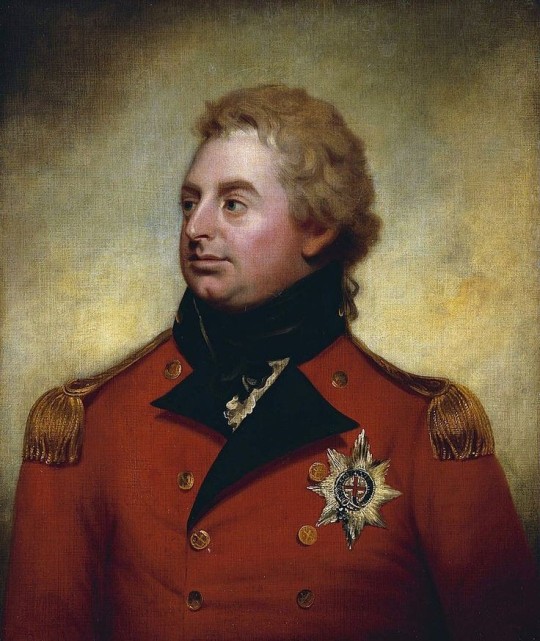

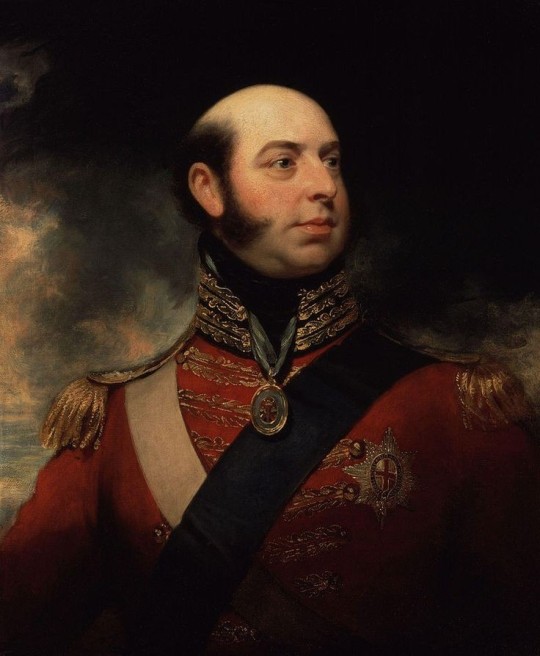
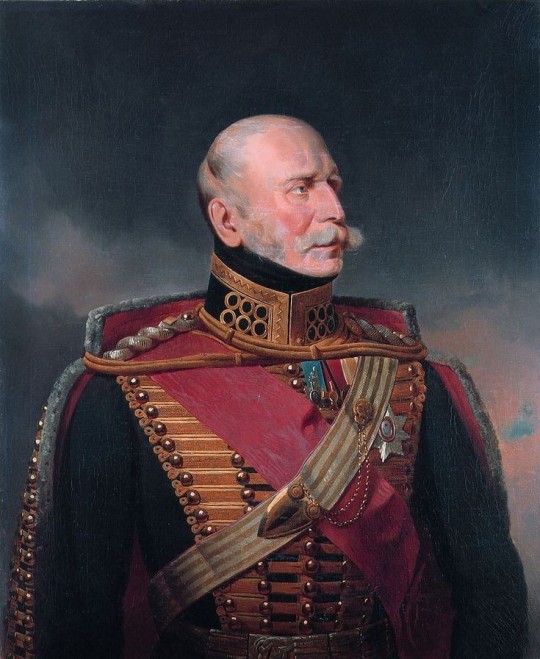


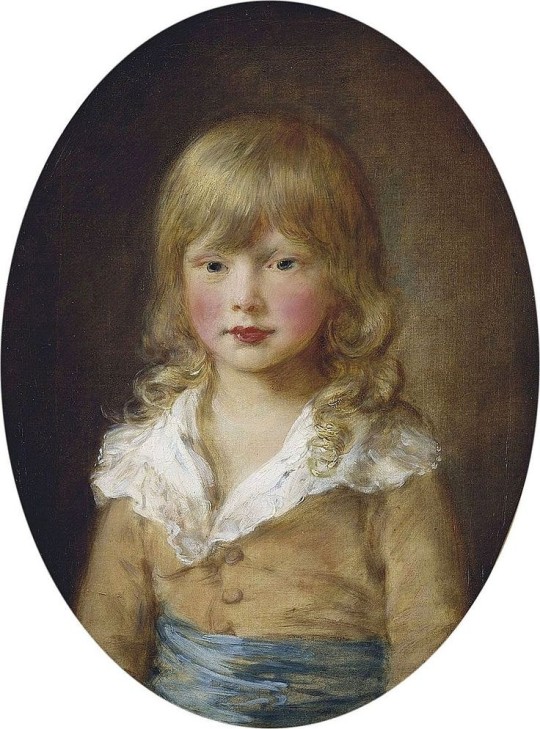

Sons of Queen Charlotte and George III:
George IV (1763-1830).Coronation portrait by Thomas Lawrence, 1821
Prince Frederick, Duke of York and Albany (1763-1827)
William IV (1765-1837).Portrait by James Lonsdale, 1830.
Prince Edward, Duke of Kent and Strathearn (1767-1820). Portrait by Sir William Beechey, 1818
Ernest Augustus, King of Hanover (1771-1851). Portrait by Edmund Koken, after 1842
Prince Augustus Frederick, Duke of Sussex (1773-1843).Portrait by Guy Head, 1798
Prince Adolphus, Duke of Cambridge (1774-1850).Portrait by William Beechey
Prince Octavius of Great Britain (1779-1783).1782, by Thomas Gainsborough
Prince Alfred of Great Britain (1780-1782). Portrait by Thomas Gainsborough, 1782
#queen charlotte#george iii#queen charlotte sons#qc:abs#george iv#prince frederick#william iv#prince edward duke of kent#prince ernest#prince augustus#prince adolphus#prince octavius#prince alfred
6 notes
·
View notes
Note
And Philip & Lilibet!✨❤










💍
💍: which is/was best royal couple part 2
Victoria Princess Royal and Crown Prince Fredrick of Prussia

2. Olga Alexandrovna and Nikolai Kulikovsky
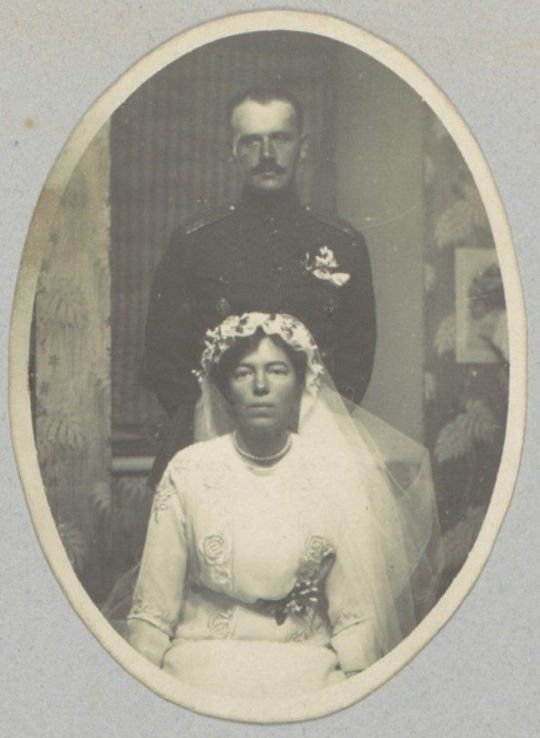
3. Tsar Alexander III and Maria Feodorovna

4. Princess Thyra of Denmark and Crown Prince Ernst August of Hanover

Thank you for asking me questions!!! (Sorry this took an extremely long time to answer)
#victoria princess royal#empress victoria of germany#kaiser frederick iii of germany#grand duchess olga alexandrovna#nikolai kulikovsky#tsar alexander iii#empress maria feodorovna#dagmar of denmark#princess thyra of denmark#crown princess thyra of hanover#crown prince ernest augustus of hanover#prince philip#duke of edinburgh#queen elizabeth ii#elizabeth windsor
34 notes
·
View notes
Text





The Wedding of Prince Ernest Augustus of Hanover and Princess Thyra of Denmark in 1878
The Royal Family depart London in 1963
0 notes
Text
Today's selected anniversaries: 24th May 2023
1883:
New York City's Brooklyn Bridge opened as the longest suspension bridge in the world at the time. https://en.wikipedia.org/wiki/Brooklyn_Bridge
1913:
Princess Victoria Louise of Prussia married Prince Ernest Augustus of Hanover; the occasion was one of the last great social events of European royalty before World War I began. https://en.wikipedia.org/wiki/Princess_Victoria_Louise_of_Prussia
1986:
A stationary front began over the central Caribbean Sea, leading to severe floods that over two weeks killed dozens of people in Cuba, the Dominican Republic, Haiti and Jamaica. https://en.wikipedia.org/wiki/1986_Jamaica_floods
1991:
The Israel Defense Forces began Operation Solomon, a covert operation to bring thousands of Ethiopian Jews to Israel (evacuees pictured). https://en.wikipedia.org/wiki/Operation_Solomon
0 notes
Photo

Oil painting of "Marie, Queen of Hanover and Crown Prince Ernst August" by court painter Carl Oesterley, c. 1846.
#Marie of Saxe-Altenburg#crown prince Ernest Augustus#prince ernest augustus#house of hanover#long live the queue
21 notes
·
View notes
Text

The Duke and Duchess of Brunswick and Lüneburg in 1934.
#duchess victoria louise of brunswick#duke ernest augustus of brunswick#prince ernest augustus of hanover#hanoverian royal family#hanover#german royalty#german royal#1934#1930s
13 notes
·
View notes
Photo

Princess Ortrud of Hanover (born Princess Ortrud of Schleswig-Holstein); Prince Ernest Augustus of Hanover; Princess Sophia of Greece (later Queen Sofia of Spain); the Duchess of Brunswick (born Princess Victoria Louise of Prussia) and King Paul of Greece, 1951
#princess sophia of greece#queen sofia of spain#king paul of greece#1950s#paul of greece#duchess of brunswick#princess ortrud of hanover#1951#princess ortrud of schleswig holstein#prince ernest augustus of hanover
33 notes
·
View notes
Photo

George III and the Royal Family on the Terrace at Windsor, 1781
A procession walking in couples (right to left) across a quadrangle or court. They go in order of age: the two youngest infants, each in the arms of a lady, go first, the king and queen last. Prince Frederick and the Prince of Wales walk together; the next couple, the Princess Royal and Prince William Henry, turn round to look at their elder brothers. Princess Augusta Sophia has her arm round the shoulders of her brother Edward; next, Princess Elizabeth walks with an arm across the shoulders of Ernest; two little boys, Augustus and Adolphus, are next. In front of them are two little girls, Princess Mary and Princess Sophia. The two infants in arms are Octavius and Alfred (born in 1779 and 1780).
#George III#Queen Charlotte#George IV#Frederick Duke of York#William IV#Charlotte Queen Consort of Württemberg#Edward Duke of Kent#Princess Augusta Sophia#Elizabeth Landgravine of Hesse-Homburg#Ernest Augustus I of Hanover#Augustus Duke of Sussex#Adolphus Duke of Cambridge#Mary Duchess of Gloucester#Princess Sophia#Prince Octavius#Prince Alfred#Hanover Bros#The Dear Sisterhood#Art#Royalty#18th Century#Queue
54 notes
·
View notes
Photo










Thomas Gainsborough’s portraits of George III, Queen Charlotte and 13/15 of their children, 1782. Prince Frederick (1763 - 1827) is not included in the set for unknown reasons, while Princess Amelia (1783 - 1810) was born a year after the portraits.
“They were painted at Windsor in September and October 1782. On 30 October the Morning Herald reported that Gainsborough ‘has just completed his painting of the whole Royal Family, at Windsor... all of which are spoken of as highly-finished characteristic portraits of the illustrious personages who sat to him’. All the portraits were exhibited at the Royal Academy in 1783.“
- The Royal Collection Trust
1: George III (1738 - 1820)
2: Queen Charlotte (1744 - 1818)
3: George, Prince of Wales (1762 - 1830)
4: Prince William (1765 - 1837)
5: Charlotte, Princess Royal (1766 - 1828)
6: Prince Edward (1867 - 1820)
7: Princess Augusta (1768 - 1840)
8: Princess Elizabeth (1770 - 1840)
9: Prince Ernest (1771 - 1851)
10: Prince Augustus (1773 - 1843)
11: Prince Adolphus (1774 - 1850)
12: Princess Mary (1776 - 1857)
13: Princess Sophia (1777 - 1848)
14: Prince Octavius (1779 - 1783)
15: Prince Alfred (1780 - 1782)
#george iii#queen charlotte#king george iii#george iv#william iv#charlotte princess royal#edward duke of kent#princess augusta#princess elizabeth#ernest augustus of hanover#adolphus duke of cambridge#princess mary#princess sophia#prince octavius#prince alfred#1782#1780s#1700s#thomas gainsborough
203 notes
·
View notes
Photo

Portrait of Victoria Luise of Prussia by Gustav Rienäcker.
Princess Victoria Louise Adelaide Matilda Charlotte of Prussia (1892–1980) was the only daughter and the last child of Wilhelm II, German Emperor. Through her father she was a great-granddaughter of both Emperor Wilhelm I and Queen Victoria. Her 1913 wedding to Prince Ernest Augustus III of Hanover was the largest gathering of reigning monarchs in Germany since German unification in 1871, and one of the last great social events of European royalty before the First World War began fourteen months later.
#Gustav Rienäcker#haus hohenzollern#preußen#german aristocracy#haus hannover#house of hanover#Braunschweig
7 notes
·
View notes
Photo
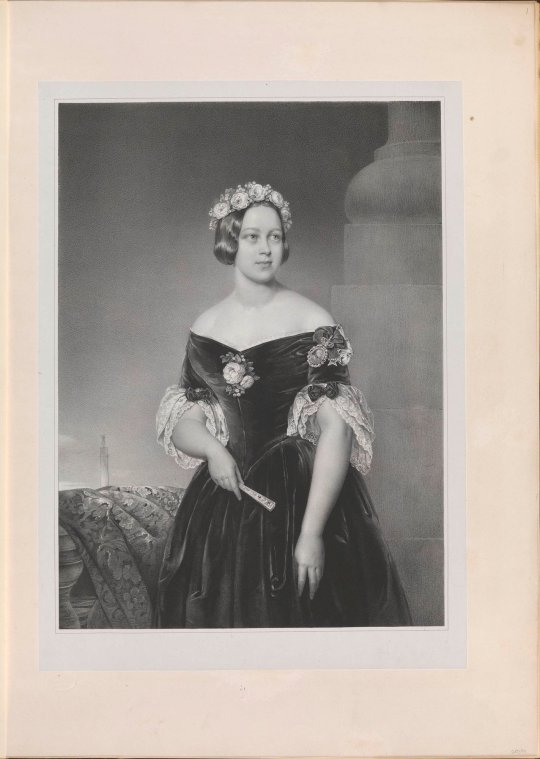



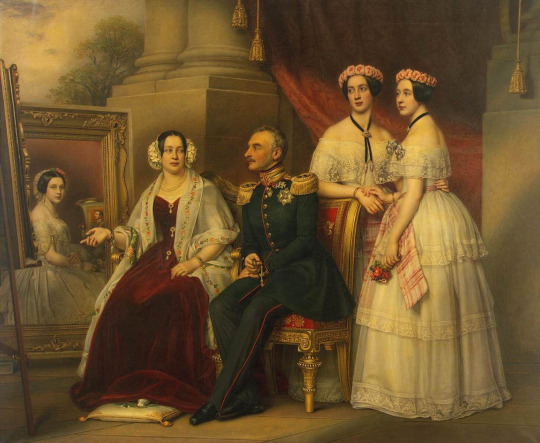
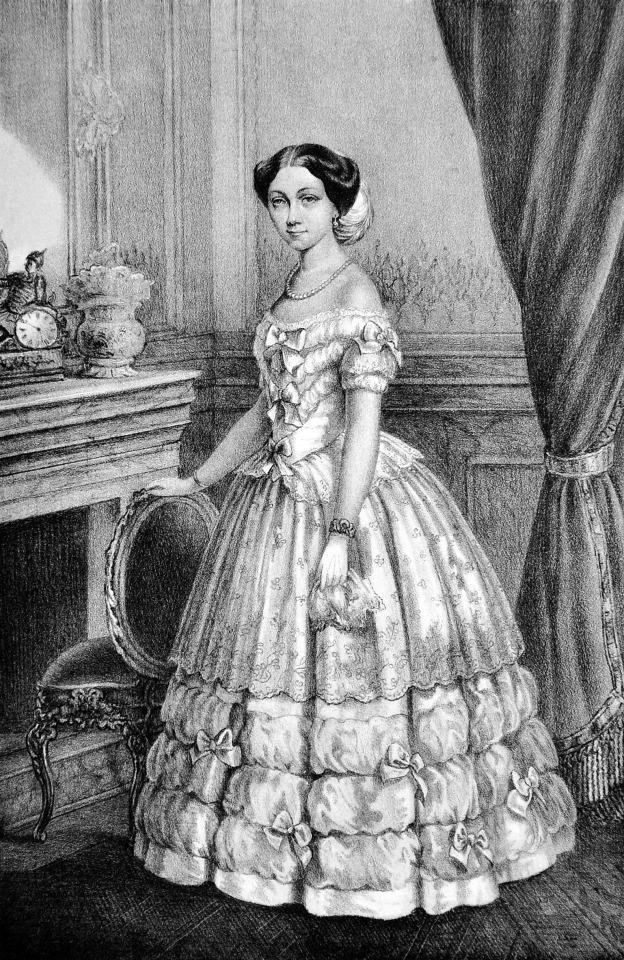
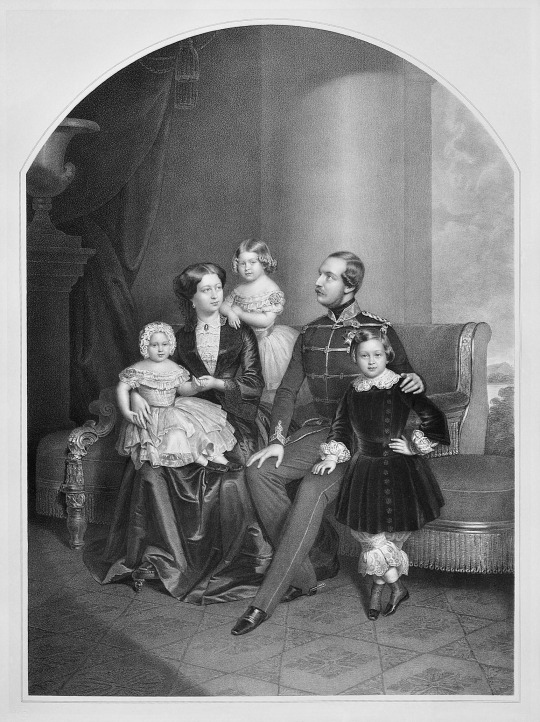
Marie of Saxe-Altenburg, Queen of Hanover:
Top left: Marie of Saxe-Altenburg, Queen of Hanover as Crown Princess by Franz Hanfstaengl after Conrad l'Allemand (Royal Collection - RCIN 610399). From their Web site 1423X2000 @72 716kj.
Top right: Koningin Marie van Hannover by Carl Mayer (Rijksmuseum), From Wikimedia; erased spots & flaws wPshop and cropped 904X1299 @300 345kj.
Second row: 1840s Maria of Saxe-Altenburg by Joseph Karl Stieler (Schloß Marienburg Pattensen - Pattensen, Niedersachsen, Germany). From pinterest.com/pin/572379433866616674/ via pinterest.com/ajackson1912/-burgundy/?lp=true; enlarged by half 846X1100 @72 364kj.
Third row: ca. 1846 Marie, Königin von Hannover und Kronprinz Ernst August by Carl Wilhelm Friedrich Oesterley (location ?). From Wikimedia; Erased spots & flaws w Pshop 1600X2349 @300 1.6Mj. There were a set of flaws along the left center that were too tightly packed to fill in accurately so the much of the left side is blurred.
Fourth row: 1848 Family of Joseph, Duke of Saxe-Altenburg by Joseph Karl Stieler (Hermitage). From wga.hu/frames-e.html?/html/s/stieler/family.html; erased flaws & fit to screen 2400X1969 @300 942kj.
Fifth row left: 1851 (after) Maria Alejandrina Reina de Hannover by M. Iglesias photo - Michael Gäbler. From Wikimedia 1537X2366 @300 2.2Mj.
Fifth row right: 1854-1856 (probably) George V of Hanover, his wife Marie of Saxe-Altenburg and their children Ernest Augustus, Crown Prince of Hanover, Princess Frederica of Hanover and Princess Marie of Hanover by Julius Giere 1543X2064 @200 1.5Mj.
#early Victorian Fashion#Romantic era fashion#Biedermeier fashion#1840s fashion#1846 fashion#1848 fashion#1850s fashion#1851 fashion#1854 fashion#Marie of Same-Altenburg#Marie von Sachsen-Altenburg#Queen of Hanover#Königin von Hanover#straight coiffure#center part#floral headdress#elbow-length sleeves#hair feathers#quarter-length sleeves#cap#lace cuffs#jacket#long sleeves#full skirt#flounced skirt#off shoulder V neckline#high neckline#lace collar#Franz Hanfstaengl#Conrad l'Allemand
11 notes
·
View notes
Text
Charlotte's Funeral
Charlotte’s Funeral

In a nation still sunk in economic depression, the focus for hope had been taken away. But for the time being the people were still united, although it was only grief that united them. Public buildings were draped in black. Everyone who could afford it was dressed in black. Even the most destitute unemployed labourers were wearing ragged black armbands. Every place of worship, whatever the…
View On WordPress
#augustus duke of sussex#charlotte of mecklenburg-strelitz (queen of the united kingdom)#charlotte&leopold#christian friedrich baron stockmar#claremont#ernest duke of cumberland and teviotdale(king of hanover)#frederick duke of york#george IV (prince of wales and prince regent)#henry howard#james chambers#prince leopold of saxe-coburg-gotha (later king of the belgians)#princess charlotte of wales#sir richard croft#sir thomas lawrence#the rev.dr william short#william IV king of the united kingdom (duke of clarence)#windsor castle
0 notes
Text
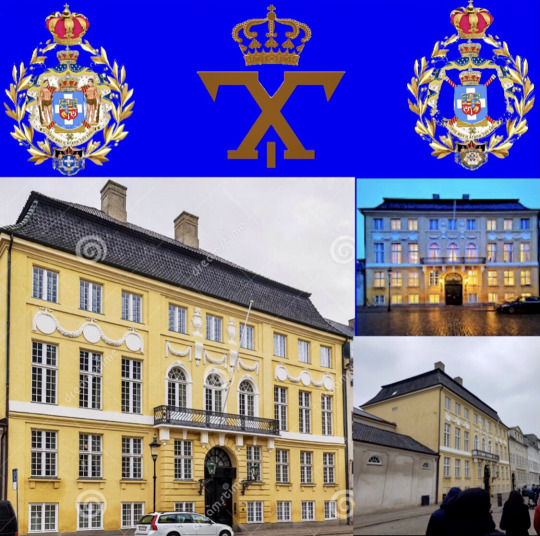
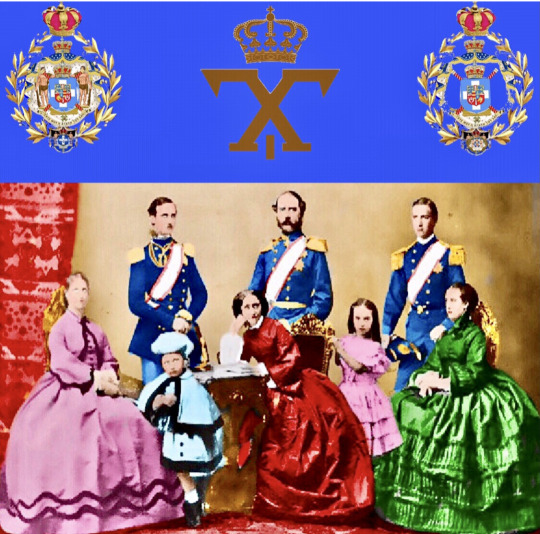
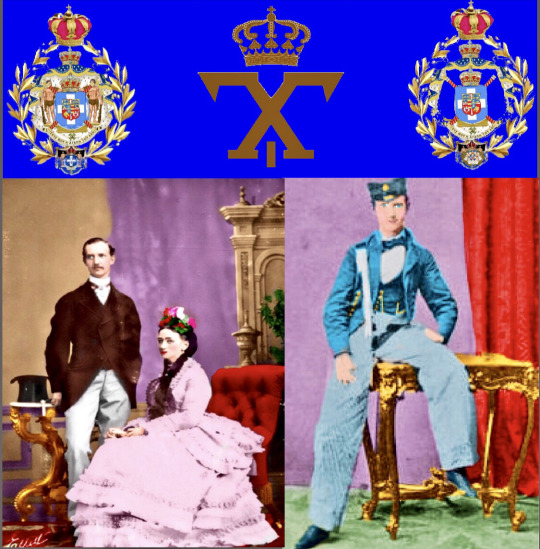

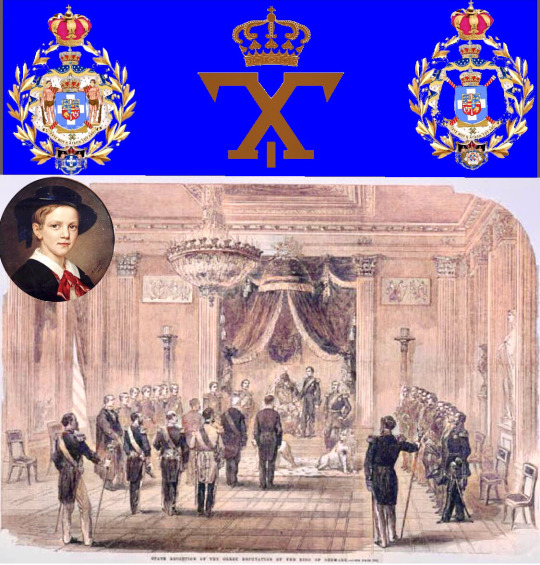
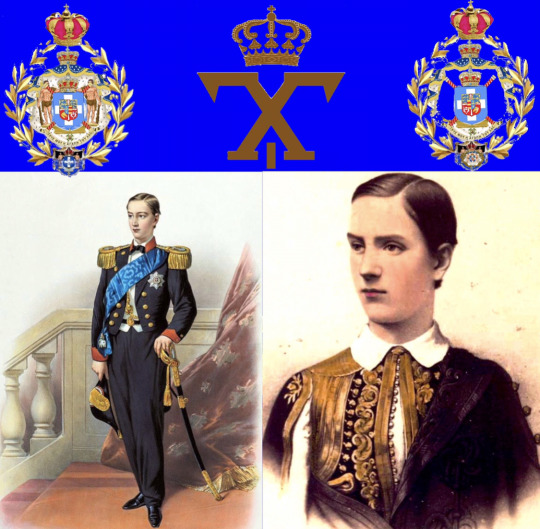

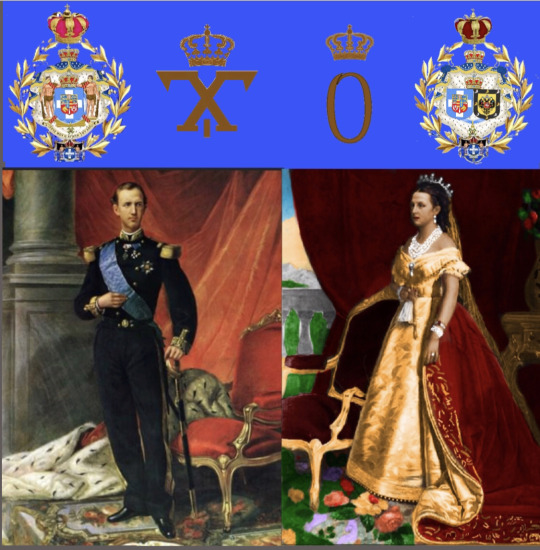

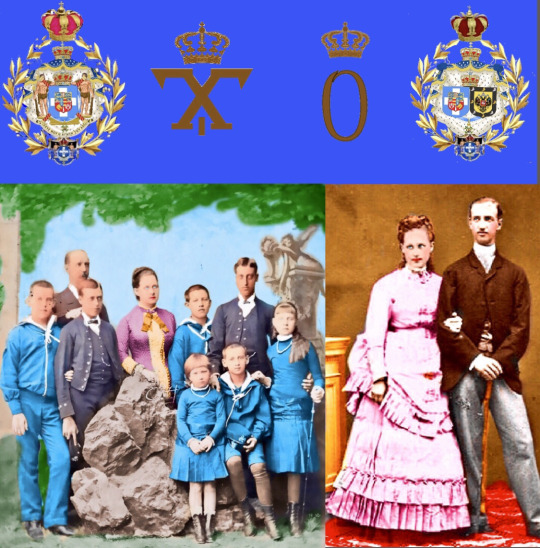
PART 1
George (24 December 1845 – 18 March 1913) was King of Hellenes (Greeks) from 30 March 1863 until his assassination in 1913.
Originally a Danish prince, he was born at the Yellow Palace, an 18th-century residence at 18 Amaliegade Street, right next to the Amalieenborg Palace complex in Copenhagen and seemed destined for a career in the Royal Danish Navy.
(1st Collage)
Although he was of royal blood (his mother and father were both great-grandchildren of Frederick V of Denmark and great-great-grandchildren of George II of Great Britain) his family was relatively obscure and lived a comparatively normal life by royal standards. In 1853, however, George's father was designated the heir presumptive to the childless Frederick VII of Denmark, and the family became princes and princesses of Denmark.
(2nd and 3rd collage)
George's siblings were Frederick (who succeeded their father as King of Denmark, and whose second son was elected as Haakon VII of Norway in 1905), Alexandra (who became wife of Edward VII of the United Kingdom and the mother of George V), Dagmar (who, as Empress Maria Feodorovna, was consort of Alexander III of Russia and the mother of Nicholas II), Thyra (who married Ernest Augustus, Crown Prince of Hanover) and Valdemar.
George's mother tongue was Danish, with English as a second language. He was also taught French and German.He embarked on a career in the Royal Danish Navy, and enrolled as a naval cadet along with his elder brother Frederick. While Frederick was described as "quiet and extremely well-behaved", George was "lively and full of pranks".
(4th Collage)
He was only 17 years old when he was elected king by the Greek National Assembly, which had deposed the unpopular Otto.
His nomination was both suggested and supported by the Great Powers: the United Kingdom of Great Britain and Ireland, the Second French Empire and the Russian Empire.
Following the overthrow of the Bavarian-born King Otto of Greece in October 1862,the Greek people had rejected Otto's brother and designated successor Luitpold, although they still favored a monarchy rather than a republic. Many Greeks, seeking closer ties to the pre-eminent world power, the United Kingdom, rallied around Prince Alfred, Duke of Edinburgh, second son of Queen Victoria and Prince Albert.British prime minister Lord Palmerston believed that the Greeks were "panting for increase in territory",hoping for a gift of the Ionian Islands, which were then a British protectorate. The London Conference of 1832, however, prohibited any of the Great Powers' ruling families from accepting the crown, and in any event, Queen Victoria was adamantly opposed to the idea. The Greeks nevertheless insisted on holding a plebiscite in which Prince Alfred received over 95% of the 240,000 votes.There were 93 votes for a Republic and six for a Greek.King Otto received one vote.
With Prince Alfred's exclusion, the search began for an alternative candidate. The French favored Henri d'Orléans, duc d'Aumale, while the British proposed Queen Victoria's brother-in-law Ernest II, Duke of Saxe-Coburg and Gotha, her nephew Prince Leiningen, and Archduke Maximilian of Austria, among others. Eventually, the Greeks and Great Powers winnowed their choice to Prince William of Denmark, who had received six votes in the plebiscite.Aged only 17, he was elected King of the Hellenes on 30 March 1863 by the Greek National Assembly under the regnal name of George I
(5 th and 6th Collage )
He married Grand Duchess Olga Constantinovna of Russia in 1867, and became the first monarch of a new Greek dynasty.
George first met Grand Duchess Olga Constantinovna of Russia in 1863, when she was 12 years old, on a visit to the court of Tsar Alexander II between his election to the Greek throne and his arrival in Athens. They met for a second time in April 1867, when George went to the Russian Empire to visit his sister Dagmar, who had married into the Russian imperial family. While George was privately a Lutheran, the Romanovs were Orthodox Christians like the majority of Greeks, and George thought a marriage with a Russian grand duchess would re-assure his subjects on the question of his future children's religion.Olga was just 16 years old when she married George at the Winter Palace in Saint Petersburg on 27 October 1867. After a honeymoon at Tsarskoye Selo, the couple left Russia for Greece on 9 November.
(7th and 8th Collage)
As a wedding gift, the Tsar gave George a group of islands in the Petalioi Gulf, which the family visited on the royal yacht Amphitrite.
(1st picture in 9th Collage)
George later purchased a country estate, Tatoi, north of Athens, and on Corfu he got from the people of Corfu as a gift for Ionian Islands transferred from British to Greek sovereignty a summer villa called Mon Repos former English High Commissioners summer residence.
(2nd picture in 9th Collage)
George developed Tatoi, building roads and planting grapes for making his own wine, Chateau Décélie
(3rd and 4th pictures in 9th Collage)
Over the next twenty years, they had eight children:
Constantine (1868–1923), who married Princess Sophia of Prussia;
George (1869–1957), who married Princess Marie Bonaparte;
Alexandra (1870–1891), who married Grand Duke Paul Alexandrovich of Russia;
Nicholas (1872–1938), who married Grand Duchess Elena Vladimirovna of Russia;
Maria (1876–1940), who married firstly Grand Duke George Mikhailovich of Russia and secondly Admiral Perikles Ioannidis;
Olga (1880), who died aged seven months;
Andrew (1882–1944), who married Princess Alice of Battenberg parents of Philip Duke of Edinburgh Prince consort of Queen Elizabeth II of the UK
Christopher (1888–1940), who married firstly American widow Nancy Stewart Worthington Leeds and secondly Princess Françoise of Orléans.
(10th Collage)
MΕΡΟΣ 1ο
176 χρόνια από τη γέννηση του Α.Μ. Γεωργίου Α΄ των Ελλήνων Πρίγκηπα της Δανίας
Ο Γεώργιος (24 Δεκεμβρίου 1845 – 18 Μαρτίου 1913) ήταν Βασιλιάς των Ελλήνων (Ελλήνων) από τις 30 Μαρτίου 1863 μέχρι τη δολοφονία του το 1913.
Αρχικά Δανός πρίγκιπας, γεννήθηκε στο Κίτρινο Παλάτι, μια κατοικία του 18ου αιώνα στην οδό Amaliegade 18, ακριβώς δίπλα στο συγκρότημα των παλατιών Amalieenborg στην Κοπεγχάγη και φαινόταν προορισμένος για μια καριέρα στο Βασιλικό Ναυτικό της Δανίας.
(1ο Κολάζ)
Αν και ήταν βασιλικού αίματος (η μητέρα και ο πατέρας του ήταν και τα δύο δισέγγονα του Φρειδερίκου Ε' της Δανίας και τρισέγγονα του Γεωργίου Β' της Μεγάλης Βρετανίας), η οικογένειά του δεν ήταν σχετικά επιφανης και ζούσε μια σχετικά φυσιολογική ζωή για τα βασιλικά πρότυπα. Το 1853, ωστόσο, ο πατέρας του Γεωργιου ορίστηκε ως ο κληρονόμος του άτεκνου Φρειδερίκου Ζ' της Δανίας και η οικογένεια έγινε πρίγκιπες και πριγκίπισσες της Δανίας.
(2ο και 3ο κολάζ)
ήταν σύζυγος του Αλέξανδρου Γ' της Ρωσίας και μητέρα του Νικολάου Β'), η Θύρα (που παντρεύτηκε τον Ερνέστο Αύγουστο, διάδοχο του Ανόβερου) και τον Βαλντεμάρ.
Η μητρική γλώσσα του Γιώργου ήταν τα δανικά, με δεύτερη γλώσσα τα αγγλικά. Διδάχτηκε επίσης γαλλικά και γερμανικά. Ξεκίνησε μια καριέρα στο Βασιλικό Ναυτικό της Δανίας και γράφτηκε ως ναυτικός δόκιμος μαζί με τον μεγαλύτερο αδελφό του Φρειδερίκη. Ενώ ο Φρειδερίκος χαρακτηρίστηκε ως «ήσυχος και εξαιρετικά καλοσυντηρημένος», ο Τζορτζ ήταν «ζωηρός και γεμάτος φάρσες».
Ήταν μόλις 17 ετών όταν εξελέγη βασιλιάς από την Ελληνική Εθνοσυνέλευση, η οποία είχε καθαιρέσει τον αντιδημοφιλή Όθωνα.
Η υποψηφιότητά του προτάθηκε και υποστηρίχθηκε από τις Μεγάλες Δυνάμεις: το Ηνωμένο Βασίλειο της Μεγάλης Βρετανίας και της Ιρλανδίας, τη Δεύτερη Γαλλική Αυτοκρατορία και τη Ρωσική Αυτοκρατορία.
Μετά την ανατροπή του γεννημένου στη Βαυαρία βασιλιά Όθωνα της Ελλάδας τον Οκτώβριο του 1862, ο ελληνικός λαός είχε απορρίψει τον αδελφό του Όθωνα και είχε ορίσει διάδοχο τον Λούιτπολντ, αν και εξακολουθούσε να ευνοεί μια μοναρχία και όχι μια δημοκρατία. Πολλοί Έλληνες, αναζητώντας στενότερους δεσμούς με την κατεξοχήν παγκόσμια δύναμη, το Ηνωμένο Βασίλειο, συσπειρώθηκαν γύρω από τον πρίγκιπα Άλφρεντ, δούκα του Εδιμβούργου, δεύτερο γιο της βασίλισσας Βικτώριας και του πρίγκιπα Αλβέρτου. Ο Βρετανός πρωθυπουργός Λόρδος Πάλμερστον πίστευε ότι οι Έλληνες «λαχανιάζουν για αύξηση σε επικράτεια», ελπίζοντας σε δώρο των Ιονίων Νήσων, που τότε ήταν βρετανικό προτεκτοράτο. Η Διάσκεψη του Λονδίνου του 1832, ωστόσο, απαγόρευσε σε οποιαδήποτε από τις κυρίαρχες οικογένειες των Μεγάλων Δυνάμεων να αποδεχθεί το στέμμα, και σε κάθε περίπτωση, η βασίλισσα Βικτώρια ήταν κατηγορηματικά αντίθετη στην ιδέα. Οι Έλληνες, ωστόσο, επέμειναν στη διεξαγωγή δημοψηφίσματος στο οποίο ο πρίγκιπας Άλφρεντ έλαβε πάνω από το 95% των 240.000 ψήφων. Υπήρχαν 93 ψήφοι για μια Δημοκρατία και έξι για έναν Έλληνα. Ο βασιλιάς Όθωνας έλαβε μία ψήφο.
Με τον αποκλεισμό του πρίγκιπα Άλφρεντ ξεκίνησε η αναζήτηση εναλλακτικού υποψηφίου. Οι Γάλλοι ευνόησαν τον Henri d'Orléans, duc d'Aumale, ενώ οι Βρετανοί πρότειναν μεταξύ άλλων τον κουνιάδο της Βασίλισσας Βικτωρίας, Ερνέστο Β', δούκα του Saxe-Coburg και Gotha, τον ανιψιό της πρίγκιπα Leiningen και τον αρχιδούκα Maximilian της Αυστρίας. Τελικά, οι Έλληνες και οι Μεγάλες Δυνάμεις κέρδισαν την επιλογή τους στον πρίγκιπα Γουλιέλμο της Δανίας, ο οποίος είχε λάβει έξι ψήφους στο δημοψήφισμα. Σε ηλικία μόλις 17 ετών, εξελέγη Βασιλιάς των Ελλήνων στις 30 Μαρτίου 1863 από την Ελληνική Εθνοσυνέλευση με το βασιλικό όνομα Γεώργιος Ι
Παντρεύτηκε τη Μεγάλη Δούκισσα Όλγα Κωνσταντίνοβνα της Ρωσίας το 1867 και έγινε ο πρώτος μονάρχης μιας νέας ελληνικής δυναστείας.
Ο Γεώργιος συνάντησε για πρώτη φορά τη Μεγάλη Δούκισσα Όλγα Κωνσταντίνοβνα της Ρωσίας το 1863, όταν ήταν 12 ετών, σε μια επίσκεψη στην αυλή του Τσάρου Αλέξανδρου Β' μεταξύ της εκλογής του στον ελληνικό θρόνο και της άφιξής του στην Αθήνα. Συναντήθηκαν για δεύτερη φορά τον Απρίλιο του 1867, όταν ο Γεώργιος πήγε στη Ρωσική Αυτοκρατορία για να επισκεφτεί την αδελφή του Ντάγκμαρ, η οποία είχε παντρευτεί τη ρωσική αυτοκρατορική οικογένεια. Ενώ ο Τζορτζ ήταν ιδιωτικά Λουθηρανός, οι Ρομανόφ ήταν Ορθόδοξοι Χριστιανοί όπως η πλειονότητα των Ελλήνων, και ο Τζορτζ πίστευε ότι ένας γάμος με μια Ρωσίδα μεγάλη δούκισσα θα επαναβεβαίωνε τους υπηκόους του για το ζήτημα της μελλοντικής θρησκείας των παιδιών του. Η Όλγα ήταν μόλις 16 ετών όταν παντρεύτηκε τον Γιώργο στα Χειμερινά Ανάκτορα στην Αγία Πετρούπολη στις 27 Οκτωβρίου 1867. Μετά από ένα μήνα του μέλιτος στο Tsarskoye Selo, το ζευγάρι έφυγ�� από τη Ρωσία για την Ελλάδα στις 9 Νοεμβρίου.
Ως γαμήλιο δώρο, ο Τσάρος έδωσε στον Γιώργο ένα συγκρότημα νησιών στον κόλπο των Πεταλιών, το οποίο επισκέφτηκε η οικογένεια με το βασιλικό γιοτ Αμφιτρίτη. Ο Γιώργος αργότερα αγόρασε ένα εξοχικό κτήμα, το Τατόι, βόρεια της Αθήνας, και στην Κέρκυρα πήρε από τους Κερκυραίους ως δώρο για τα Επτάνησα, μεταβίβασε από την αγγλική στην ελληνική κυριαρχία μια θερινή βίλα που ονομαζόταν Mon Repos πρώην θερινή κατοικία των Άγγλων Ύπατων Αρμοστειών.
Ο Γιώργος ανέπτυξε το Τατόι, χτίζοντας δρόμους και φυτεύοντας σταφύλια για να φτιάξει το δικό του κρασί, Chateau Décélie
Τα επόμενα είκοσι χρόνια απέκτησαν οκτώ παιδιά:
Κωνσταντίνος (1868–1923), που παντρεύτηκε την πριγκίπισσα Σοφία της Πρωσίας.
George (1869–1957), που παντρεύτηκε την πριγκίπισσα Μαρία Βοναπάρτη.
Αλεξάνδρα (1870–1891), που παντρεύτηκε τον Μέγα Δούκα Παύλο Αλεξάντροβιτς της Ρωσίας.
Νικόλαος (1872–1938), ο οποίος παντρεύτηκε τη Μεγάλη Δούκισσα Έλενα Βλαντιμίροβνα της Ρωσίας.
Μαρία (1876–1940), που παντρεύτηκε πρώτον τον Μέγα Δούκα Γεώργιο Μιχαήλοβιτς της Ρωσίας και δεύτερον τον ναύαρχο Περικλή Ιωαννίδη.
Όλγα (1880), που πέθανε σε ηλικία επτά μηνών.
Andrew (1882–1944), ο οποίος παντρεύτηκε την πριγκίπισσα Αλίκη του Battenberg, γονείς του Φίλιππου Δούκα του Εδιμβούργου, πρίγκιπα συζύγου της βασίλισσας Ελισάβετ Β του Ηνωμένου Βασιλείου
Christopher (1888–1940), ο οποίος παντρεύτηκε πρώτα την Αμερικανίδα χήρα Nancy Stewart Worthington Leeds και δεύτερον την πριγκίπισσα Françoise της Ορλεάνης.
Η βασιλεία του Γεωργίου σχεδόν 50 ετών (η μεγαλύτερη στη σύγχρονη ελληνική ιστορία) χαρακτηρίστηκε από εδαφικά κέρδη καθώς η Ελλάδα εδραίωσε τη θέση της στην Ευρώπη πριν από τον Α' Παγκόσμιο Πόλεμο. Η Βρετανία παραχώρησε ειρηνικά τα Επτάνησα το 1864, ενώ η Θεσσαλία προσαρτήθηκε από την Οθωμανική Αυτοκρατορία μετά τον Ρωσοτουρκικό πόλεμο (1877–1878). Η Ελλάδα δεν ήταν πάντα επιτυχημένη στις εδαφικές της φιλοδοξίες. ηττήθηκε στον ελληνοτουρκικό πόλεμο (1897). Κατά τον Α' Βαλκανικό Πόλεμο, αφού τα ελληνικά στρατεύματα είχαν καταλάβει μεγάλο μέρος της ελληνικής Μακεδονίας, ο Γεώργιος δολοφονήθηκε στη Θεσσαλονίκη. Σε σύγκριση με τη δική του μακρά θητεία, η βασιλεία των διαδόχων του Κωνσταντίνου Α', Αλεξάνδρου και Γεωργίου Β' αποδείχθηκε σύντομη και ανασφαλής.
Εκτός από τα Επτάνησα, η επέκταση του ελληνικού βασιλείου από το 1863 έως το 1947. Η Θεσσαλία μεταφέρθηκε από την Οθωμανική στην Ελληνική κυριαρχία το 1881 και τα Δώδεκα Νησιά του Αιγαίου μεταφέρθηκαν από τους Ιταλούς στην Ελλάδα κατά τη διάρκεια της βασιλείας του βασιλιά Παύλου Α' των Ελλήνων εγγονός στον βασιλιά Γεώργιο Α' .
Καθώς πλησίαζε την πεντηκοστή επέτειο από την άνοδό του, ο Βασιλιάς έκανε σχέδια να παραιτηθεί υπέρ του γιου του Κωνσταντίνου αμέσως μετά τον εορτασμό της χρυσής ιωβηλείας του τον Οκτώβριο του 1913. Όπως έκανε στην Αθήνα, ο Γεώργιος περιηγήθηκε τη Θεσσαλονίκη χωρίς καμία ουσιαστική δύναμη προστασίας . Ενώ βρισκόταν σε μια απογευματινή βόλτα κοντά στον Λευκό Πύργο στις 18 Μαρτίου 1913, πυροβολήθηκε από κοντά στην πλάτη από τον Αλέξανδρο Σχινά, ο οποίος «έλεγε ότι ανήκε σε σοσιαλιστική οργάνωση» και «όταν συνελήφθη δήλωσε ότι είχε σκοτώσει τον βασιλιά. γιατί αρνήθηκε να του δώσει χρήματα». Ο Γιώργος πέθανε ακαριαία, με τη σφαίρα να έχει εισχωρήσει στην καρδιά του. Η ελληνική κυβέρνηση αρνήθηκε οποιοδήποτε πολιτικό κίνητρο για τη δολοφονία, λέγοντας ότι ο Σχινάς ήταν αλκοολικός αλήτης. Ο Σχινάς βασανίστηκε στη φυλακή και έπεσε μέχρι θανάτου από το παράθυρο του αστυνομικού τμήματος έξι εβδομάδες αργότερα.
Η σορός του βασιλιά μεταφέρθηκε στην Αθήνα στην Αμφιτρίτη, συνοδεία στολίσκου πλοίων του πολεμικού ναυτικού. Για τρεις ημέρες το φέρετρο του Βασιλιά, ντυμένο με τη δανική και την ελληνική σημαία, βρισκόταν στον Μητροπολιτικό Καθεδρικό Ναό της Αθήνας πριν το σώμα του παραδοθεί σε τάφος στο παλάτι του στο Τατόι.
Τα αδέρφια του Γεωργίου ήταν ο Φρειδερίκος (ο οποίος διαδέχτηκε τον πατέρα τους ως βασιλιάς της Δανίας και του οποίου ο δεύτερος γιος εξελέγη ως Haakon VII της Νορβηγίας το 1905), η Αλεξάνδρα (η οποία έγινε σύζυγος του Εδουάρδου Ζ' του Ηνωμένου Βασιλείου και μητέρα του Γεωργίου Ε'), η Ντάγκμαρ (η οποία, ως αυτοκράτειρα Μαρία Φεοντόροβνα, ήταν σύζυγος του Αλέξανδρου Γ' της Ρωσίας και μητέρα του Νικολάου Β'), η Θύρα (που παντρεύτηκε τον Ερνέστο Αύγουστο, διάδοχο του Ανόβερου) και τον Βαλντεμάρ
Η μητρική γλώσσα του Γιώργου ήταν τα δανικά, με δεύτερη γλώσσα τα αγγλικά. Διδάχτηκε επίσης γαλλικά και γερμανικά. Ξεκίνησε μια καριέρα στο Βασιλικό Ναυτικό της Δανίας και γράφτηκε ως ναυτικός δόκιμος μαζί με τον μεγαλύτερο αδελφό του Φρειδερίκο. Ενώ ο Φρειδερίκος χαρακτηρίστηκε ως «ήσυχος και εξαιρετικά καλοσυντηρημένος», ο Γεωργ��ος ήταν «ζωηρός και γεμάτος φάρσες».
(4ο Κολάζ)
Ήταν μόλις 17 ετών όταν εξελέγη βασιλιάς από την Ελληνική Εθνοσυνέλευση, η οποία είχε καθαιρέσει τον αντιδημοφιλή Όθωνα.
Η υποψηφιότητά του προτάθηκε και υποστηρίχθηκε από τις Μεγάλες Δυνάμεις: το Ηνωμένο Βασίλειο της Μεγάλης Βρετανίας και της Ιρλανδίας, τη Δεύτερη Γαλλική Αυτοκρατορία και τη Ρωσική Αυτοκρατορία.
Μετά την ανατροπή του γεννημένου στη Βαυαρία βασιλιά Όθωνα της Ελλάδας τον Οκτώβριο του 1862, ο ελληνικός λαός είχε απορρίψει τον αδελφό του Όθωνα και είχε ορίσει διάδοχο τον Λούιτπολντ, αν και εξακολουθούσε να ευνοεί μια μοναρχία και όχι μια δημοκρατία. Πολλοί Έλληνες, αναζητώντας στενότερους δεσμούς με την κατεξοχήν παγκόσμια δύναμη, το Ηνωμένο Βασίλειο, συσπειρώθηκαν γύρω από τον πρίγκιπα Άλφρεντ, δούκα του Εδιμβούργου, δεύτερο γιο της βασίλισσας Βικτώριας και του πρίγκιπα Αλβέρτου. Ο Βρετανός πρωθυπουργός Λόρδος Πάλμερστον πίστευε ότι οι Έλληνες «λαχανιάζουν για αύξηση σε επικράτεια», ελπίζοντας σε δώρο των Ιονίων Νήσων, που τότε ήταν βρετανικό προτεκτοράτο. Η Διάσκεψη του Λονδίνου του 1832, ωστόσο, απαγόρευσε σε οποιαδήποτε από τις κυρίαρχες οικογένειες των Μεγάλων Δυνάμεων να αποδεχθεί το στέμμα, και σε κάθε περίπτωση, η βασίλισσα Βικτώρια ήταν κατηγορηματικά αντίθετη στην ιδέα. Οι Έλληνες, ωστόσο, επέμειναν στη διεξαγωγή δημοψηφίσματος στο οποίο ο πρίγκιπας Άλφρεντ έλαβε πάνω από το 95% των 240.000 ψήφων. Υπήρχαν 93 ψήφοι για μη Βασιλευομένη Δημοκρατία και έξι για έναν Έλληνα. Ο βασιλιάς Όθωνας έλαβε μία ψήφο.
Με τον αποκλεισμό του πρίγκιπα Άλφρεντ ξεκίνησε η αναζήτηση εναλλακτικού υποψηφίου. Οι Γάλλοι ευνόησαν τον Henri d'Orléans, duc d'Aumale, ενώ οι Βρετανοί πρότειναν μεταξύ άλλων τον κουνιάδο της Βασίλισσας Βικτωρίας, Ερνέστο Β', δούκα του Saxe-Coburg και Gotha, τον ανιψιό της πρίγκιπα Leiningen και τον αρχιδούκα Μαξιμιλιανο της Αυστρίας. Τελικά, οι Έλληνες και οι Μεγάλες Δυνάμεις κέρδισαν την επιλογή τους στον πρίγκιπα Γουλιέλμο της Δανίας, ο οποίος είχε λάβει έξι ψήφους στο δημοψήφισμα. Σε ηλικία μόλις 17 ετών, εξελέγη Βασιλιάς των Ελλήνων στις 30 Μαρτίου 1863 από την Ελληνική Εθνοσυνέλευση με το βασιλικό όνομα Γεώργιος Ι
(5ο και 6ο Κολάζ)
Παντρεύτηκε τη Μεγάλη Δούκισσα Όλγα Κωνσταντίνοβνα της Ρωσίας το 1867 και έγινε ο πρώτος μονάρχης μιας νέας ελληνικής δυναστείας.
Ο Γεώργιος συνάντησε για πρώτη φορά τη Μεγάλη Δούκισσα Όλγα Κωνσταντίνοβνα της Ρωσίας το 1863, όταν ήταν 12 ετών, σε μια επίσκεψη στην αυλή του Τσάρου Αλέξανδρου Β' μεταξύ της εκλογής του στον ελληνικό θρόνο και της άφιξής του στην Αθήνα. Συναντήθηκαν για δεύτερη φορά τον Απρίλιο του 1867, όταν ο Γεώργιος πήγε στη Ρωσική Αυτοκρατορία για να επισκεφτεί την αδελφή του Ντάγκμαρ, η οποία είχε παντρευτεί στη ρωσική αυτοκρατορική οικογένεια. Ενώ ο Γεωργιος ήταν ιδιωτικά Λουθηρανός, οι Ρομανόφ ήταν Ορθόδοξοι Χριστιανοί όπως η πλειονότητα των Ελλήνων, και ο Γεωργιος πίστευε ότι ένας γάμος με μια Ρωσίδα μεγάλη δούκισσα θα επαναβεβαίωνε τους υπηκόους του για το ζήτημα της μελλοντικής θρησκείας των παιδιών του. Η Όλγα ήταν μόλις 16 ετών όταν παντρεύτηκε τον Γιώργο στα Χειμερινά Ανάκτορα στην Αγία Πετρούπολη στις 27 Οκτωβρίου 1867. Μετά από ένα μήνα του μέλιτος στο Tsarskoye Selo, το ζευγάρι έφυγε από τη Ρωσία για την Ελλάδα στις 9 Νοεμβρίου.
(7ο και 8ο κολάζ)
Ως γαμήλιο δώρο, ο Τσάρος έδωσε στον Γιώργο ένα συγκρότημα νησιών στον κόλπο των Πεταλιών, το οποίο επισκέφτηκε η οικογένεια με το βασιλικό γιοτ Αμφιτρίτη.
(1η εικόνα στο 9ο Κολάζ)
Ο Γιώργος αργότερα αγόρασε ένα εξοχικό κτήμα, το Τατόι, βόρεια της Αθήνας, και στην Κέρκυρα πήρε από τους Κερκυραίους ως δώρο για τα Επτάνησα, μεταβίβασε από την αγγλική στην ελληνική κυριαρχία μια θερινή βίλα που ονομαζόταν Mon Repos πρώην θερινή κατοικία των Άγγλων Ύπατων Αρμοστειών.
(2η εικόνα στο 9ο Κολάζ)
Ο Γιώργος ανέπτυξε το Τατόι, χτίζοντας δρόμους και φυτεύοντας σταφύλια για να φτιάξει το δικό του κρασί, Chateau Décélie
(3η και 4η εικόνα στο 9ο κολάζ)
Τα επόμενα είκοσι χρόνια απέκτησαν οκτώ παιδιά:
1)Κωνσταντίνος (1868–1923), που παντρεύτηκε την πριγκίπισσα Σοφία της Πρωσίας.
2)Γεώργιος (1869–1957), που παντρεύτηκε την πριγκίπισσα Μαρία Βοναπάρτη.
3)Αλεξάνδρα (1870–1891), που παντρεύτηκε τον Μέγα Δούκα Παύλο Αλεξάντροβιτς της Ρωσίας.
4)Νικόλαος (1872–1938), ο οποίος παντρεύτηκε τη Μεγάλη Δούκισσα Έλενα Βλαντιμίροβνα της Ρωσίας.
5)Μαρία (1876–1940), που παντρεύτηκε πρώτον τον Μέγα Δούκα Γεώργιο Μιχαήλοβιτς της Ρωσίας και δεύτερον τον ναύαρχο Περικλή Ιωαννίδη.
6)Όλγα (1880), που πέθανε σε ηλικία επτά μηνών.
7) Ανδρέας (1882–1944), ο οποίος παντρεύτηκε την πριγκίπισσα Αλίκη του Battenberg, γονείς του Φίλιππου Δούκα του Εδιμβούργου, πρίγκιπα συζύγου της βασίλισσας Ελισάβετ Β του Ηνωμένου Βασιλείου
8) (1888–1940), ο οποίος παντρεύτηκε πρώτα την Αμερικανίδα χήρα Nancy Stewart Worthington Leeds και δεύτερον την πριγκίπισσα Φρανγκισκη της Ορλεάνης.
(10ο και 11ο κολάζ)
Η βασιλεία του Γεωργίου σχεδόν 50 ετών (η μεγαλύτερη στη σύγχρονη ελληνική ιστορία) χαρακτηρίστηκε από εδαφικά κέρδη καθώς η Ελλάδα εδραίωσε τη θέση της στην Ευρώπη πριν από τον Α' Παγκόσμιο Πόλεμο. Η Βρετανία παραχώρησε ειρηνικά τα Επτάνησα το 1864, ενώ η Θεσσαλία προσαρτήθηκε από την Οθωμανική Αυτοκρατορία μετά τον Ρωσοτουρκικό πόλεμο (1877–1878). Η Ελλάδα δεν ήταν πάντα επιτυχημένη στις εδαφικές της φιλοδοξίες. ηττήθηκε στον ελληνοτουρκικό πόλεμο (1897). Κατά τον Α' Βαλκανικό Πόλεμο, αφού τα ελληνικά στρατεύματα είχαν καταλάβει μεγάλο μέρος της ελληνικής Μακεδονίας.
(12ο Κολάζ)
Σε σύγκριση με τη δική του μακρά θητεία, η βασιλεία των διαδόχων του Κωνσταντίνου Α', Αλεξάνδρου και Γεωργίου Β' αποδείχθηκε σύντομη και ανασφαλής.
Εκτός από τα Επτάνησα, η επέκταση του ελληνικού βασιλείου από το 1863 έως το 1947. Η Θεσσαλία μεταφέρθηκε από την Οθωμανική στην Ελληνική κυριαρχία το 1881 και τα Δώδεκα Νησιά του Αιγαίου μεταφέρθηκαν από τους Ιταλούς στην Ελλάδα κατά τη διάρκεια της βασιλείας του βασιλιά Παύλου Α' των Ελλήνων εγγονός στον βασιλιά Γεώργιο Α' .
(13ο Κολάζ)
Καθώς πλησίαζε την πεντηκοστή επέτειο από την άνοδό του, ο Βασιλιάς έκανε σχέδια να παραιτηθεί υπέρ του γιου του Κωνσταντίνου αμέσως μετά τον εορτασμό της χρυσής ιωβηλείας του τον Οκτώβριο του 1913. Όπως έκανε στην Αθήνα, ο Γεώργιος περιηγήθηκε τη Θεσσαλονίκη χωρίς καμία ουσιαστική δύναμη προστασίας . Ενώ ήταν σε μια απογευματινή βόλτα κοντά στον Λευκό Πύργο στις 18 Μαρτίου 1913, πυροβολήθηκε από κοντά στην πλάτη.
(14ο,15ο Κολάζ)
Ο δολοφόνος Αλέξανδρος Σχινάς, που «έλεγαν ότι ανήκε σε σοσιαλιστική οργάνωση» και «όταν συνελήφθη δήλωσε ότι σκότωσε τον Βασιλιά επειδή αρνήθηκε να του δώσει χρήματα».
Ο Γιώργος πέθανε ακαριαία, με τη σφαίρα να έχει εισχωρήσει στην καρδιά του. Η ελληνική κυβέρνηση αρνήθηκε οποιοδήποτε πολιτικό κίνητρο για τη δολοφονία, λέγοντας ότι ο Σχινάς ήταν αλκοολικός αλήτης. Ο Σχινάς βασανίστηκε στη φυλακή και έπεσε μέχρι θανάτου από το παράθυρο του αστυνομικού τμήματος έξι εβδομάδες αργότερα.
(16ο και 17ο κολάζ)
Η σορός του Βασιλιά μεταφέρθηκε στην Αθήνα με την Βασιλική Θαλαμηγό Αμφιτρίτη, συνοδεία στολίσκου πλοίων του λιμενικού.
(18ο Κολάζ)
Επί τρεις ημέρες το φέρετρο του Βασιλιά, ντυμένο με τη δανική και την ελληνική σημαία, βρισκόταν στον Μητροπολιτικό Καθεδρικό Ναό της Αθήνας προτού το σώμα του παραδοθεί σε τάφο στο παλάτι του στο Τατόι.
(19ο και 20ο κολάζ)
#kingconstantine#danishroyalfamily#crownprincepavlos#queenannemarie#greek royal family#house of romanov#greekroyals#crownprincessmariechantal#danishroyals#princeconstantinealexios#princessmarieolympia#princess theodora#princeachileasandreas#princenikolaos#princesstatiana#princesseirini#princessnina#princeodyseaskimon#princearistidesstavros#princefilippos
12 notes
·
View notes